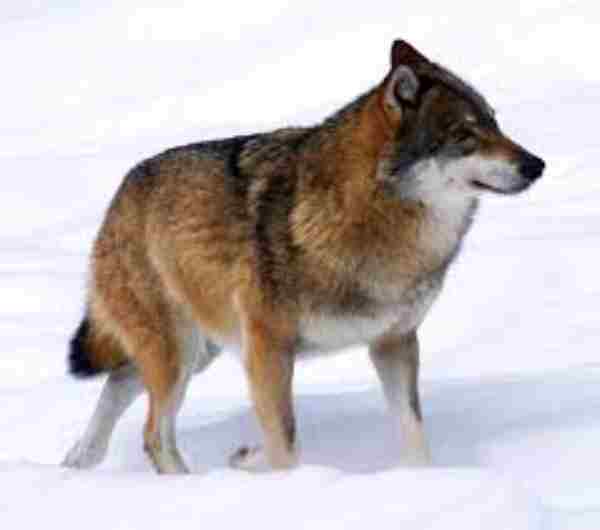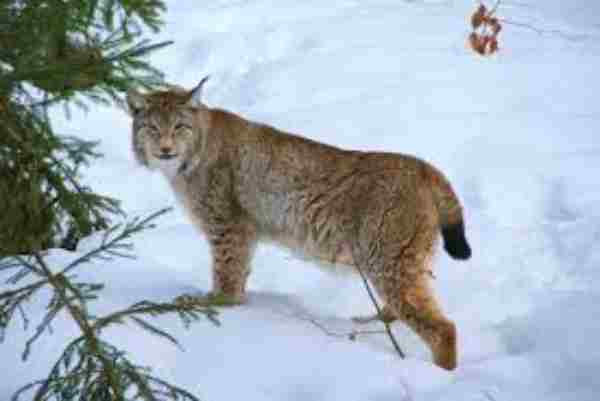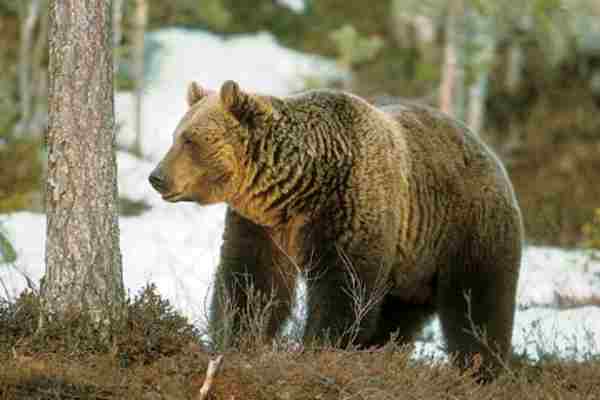If you are seeking an unforgettable experience, why not consider embarking on a journey to explore the beautiful wildlife of Sweden? From its stunning archipelagos to the Northern Lights and otherworldly fashions, Sweden is a land that boasts a rich cultural heritage, mouth-watering cuisine, and breathtaking nature.
Table of Contents
With so much to offer, it’s no wonder that Sweden is a must-visit destination for adventurers around the world. To learn more about the incredible wildlife that has cultural and historical significance to Sweden, select your favourite animal from the list below. Join us on a journey of discovery, where you’ll be able to immerse yourself in the natural beauty of this magnificent country.
Sweden
Situated in Northern Europe, the Scandinavian country of Sweden boasts a remarkable history and a population of over 9 million people.
Sweden is characterized by its numerous coastal islands, captivating inland lakes, vast forests, and awe-inspiring glaciated mountain ranges that stretch as far as the eye can see.
The city centre of Stockholm, a stunning metropolis, has been under the governance of a monarchy for over two millennia, symbolizing Sweden’s enduring legacy.
The preservation of natural biodiversity is a top priority in Sweden, and strict environmental regulations are in place to ensure its protection. The country is home to flourishing indigenous forests, expansive flower fields, lakes, hills, and mountains.
These natural wonders provide fantastic opportunities for summer activities like hiking, as the sun dries the ground and illuminates the surroundings. Birdwatchers will delight in the presence of hundreds of colourful bird species.
In the countryside, it is not uncommon to casually encounter wild animals such as moose, deer, and lynx, making for a fortunate and potentially selfie-worthy experience.
If you’re travelling with a group of friends, you can find perfect camping spots near caves where you can set up campsites, light bonfires, enjoy barbecues, and spend the evenings singing away. Remember to bring a camera or binoculars to capture the beauty of this country and create a photo gallery to treasure your adventures.
Seasons in Sweden
As we all know, Sweden experiences four distinct seasons: spring, summer, fall, and winter. While typically spring runs from March/April to May, summer from June to August, fall from September to October/November, and winter from November/December to March/February, the length and intensity of each season can differ depending on where you live in Sweden.
But whether you are in the north or south, there is beauty to be found in every season. In the winter months, the Northern Lights illuminate the skies, while summertime brings the enchanting Midnight Sun. Regardless of your preferences, Sweden has something to offer everyone, from the stunning mountains in the north to the idyllic white sandy beaches in the south.
Wildlife of Sweden
For wildlife enthusiasts, Sweden is a paradise. In addition to easily spotted animals like moose, reindeer, deer, and various bird species, the country’s nature is home to a range of predators, including bears, wolves, lynx, and wolverines.
This abundance of wildlife in Sweden can be attributed to its geographical features. As the third largest country in the European Union, Sweden boasts vast territories with diverse ecosystems. Remarkably, it also has the second lowest population density, with only 23.5 people per square kilometre. This means that large expanses of wilderness remain untouched, providing ample space for Sweden’s wildlife to thrive.
The relatively low human presence allows for more frequent and rewarding animal encounters in Sweden compared to many other European countries. It presents a unique opportunity to witness and experience the natural behaviours of these fascinating creatures in their natural habitat.
#1 Wolf

Sweden and Norway share a wolf population, and the numbers of wolves in both countries can fluctuate. Currently, approximately 90 per cent of this trans-border wolf population resides in Sweden.
Conservation efforts are crucial in Sweden due to the genetic isolation that occurred as a result of relocating wolves to mitigate human-wildlife conflicts in Northern Sweden.
Wolves have made a recent comeback to Sweden and Scandinavia after being declared extinct in the 1960s. Historically, wolves were hunted for their fur, especially their thick winter coats. As cattle and sheep farming became more prevalent, wolves were also killed because they posed a threat to domestic herds.
The arrival of wolves in Scandinavia can be traced back to the post-ice age period, around 10,000 years ago. Wolves migrated from Eurasia alongside humans, deer, and other mammals. Since then, wolves have been an integral part of the region’s fauna and cultural history.
Wolves are highly social animals and typically live in family groups, often referred to as packs. A typical family group consists of two parent wolves and their offspring (pups). Most pups disperse from their family after around twelve months, before reaching sexual maturity. However, some pups may remain with the family for more than one year. These older pups may act as caregivers and stay close to the younger generation of wolves.
#2 Lynx

The lynx is a nomadic, nocturnal, and solitary animal, with socialization primarily occurring during the rutting season in the early months of the year. It tends to hibernate during colder temperatures and exhibits a relatively nocturnal lifestyle.
A lynx belongs to the medium-sized wild cat genus Lynx and comprises four species. The name “lynx” originated from Middle English, passed through Latin, and comes from the Greek word “λύγξ,” which is derived from the Indo-European root “leuk-” related to the luminescence of its reflective eyes.
In Sweden, the lynx is the largest feline species and generally weighs around 15 to 30 kilograms, although there have been records of heavier individuals, particularly from Siberia. Male lynx typically range from 18 to 30 kilograms, while females weigh between 8 and 21 kilograms.
These feline creatures primarily hunt and feed on reindeer in northern parts of Sweden, while in the southern regions, they predominantly target roe deer. The lynx is considered a skilled hunter and can prey on various animals, including wildfowl and hares.
Since 1991, the lynx has been protected in Sweden, and the hunting of these animals by humans is regulated by government agencies.
#3 Moose ( European Elk)

Sweden is home to approximately 350,000 moose (Alces alces). The moose, also known as elk, belongs to the New World deer subfamily and is the largest and heaviest extant species in the deer family. Adult male moose typically have broad, palmate antlers, which distinguish them from other members of the deer family who have antlers with a dendritic configuration.
Moose are native to both North America and Europe and hold the distinction of being Sweden’s most iconic animal species. These solitary and nomadic creatures can be spotted freely roaming the landscape. The chances of encountering a moose are higher in the northern parts of Sweden, where extensive forests, marshlands, and abundant shrubbery provide the ideal habitat for these majestic animals. The remote area of central Sweden known as Bergslagen is particularly home to a significant moose population.
Sweden is home to nearly 400,000 moose, with an estimated 30,000 residing in the forests of Småland. While there are various small moose parks, many visitors prefer to explore the Swedish wilderness to witness moose in their natural habitat. It offers a thrilling opportunity to observe these magnificent creatures up close.
White Moose
The all-white appearance of moose is not a result of albinism, which is a congenital condition causing a loss of pigmentation. Animals and people with albinism typically have light or pinkish-coloured eyes. In the case of moose with bright white fur, their colouring is often attributed to a recessive gene that causes them to grow white with brown specks. This condition is known as piebald.
Although white moose are not as commonly seen as their brown counterparts, videos of these unique animals have surfaced. They are predominantly found on the border of Norway in the province of Värmland. These rare white moose have captured the attention and fascination of many due to their striking appearance.
#4 Arctic Fox

The arctic fox, scientifically known as Alopex lagopus or polar fox, is one of the most endangered mammals in Sweden and is facing extinction across Europe.
More than a decade ago, the population of arctic foxes in Scandinavia was on the verge of extinction. However, thanks to a joint feeding scheme implemented by Norway and Sweden, the once-declining population has started to recover.
The Arctic fox is incredibly resilient and can withstand extremely cold temperatures. They do not begin to shiver until the temperature drops to around -70 degrees Celsius. Their paws are also covered in fur, which provides insulation in the icy environment.
The fur of the arctic fox changes colour from summer to winter, allowing for effective camouflage. Their coat can range from greyish brown to white or blue-grey. These foxes are so iconic in Sweden that a well-known Swedish brand of backpacks and outdoor gear is named after them.
Arctic foxes are well-adapted to the frigid Arctic conditions, with furry soles, short ears, and a short muzzle. They create shelter by living in caves and may even tunnel into the snow during blizzards.
Despite being predators in their ecosystem, arctic foxes are also victims of predation. Conservation efforts are underway in Sweden, Norway, and Finland to increase the populations of arctic foxes and address the factors threatening their survival. Volunteers and various conservation initiatives contribute to monitoring, understanding behavioural patterns, and protecting these magnificent creatures for the future.
#5 Reindeer

The reindeer, also known as caribou in North America, is a deer species with a wide distribution in the Arctic, sub-Arctic, tundra, boreal, and mountainous regions of northern Europe, Siberia, and North America. There are sedentary and migratory populations of reindeer.
There are two main ecotypes or varieties of reindeer: tundra reindeer and forest reindeer. Tundra reindeer undertake impressive seasonal migrations, with numbers reaching hundreds of thousands and covering distances of up to 5,000 kilometres.
While wild reindeer disappeared from the Swedish mountains in the early 20th century, there are still populations of wild reindeer in certain areas of Norway. The Sami people have a long-standing connection with reindeer and have lived near them for generations. Although the reindeer have become accustomed to human presence, they still retain their instinct to roam freely and graze undisturbed, and visitors need to respect this natural behaviour.
Reindeer hold significant cultural importance for the Sami, serving as symbols of their identity and being a vital resource. They have been used as pack and draught animals, their fur and hides provide warmth and clothing, and reindeer meat is an essential part of the Sami culinary tradition.
The Sami people’s indigenous and sacred land, known as Sapmi or Sápmi, spans Arctic Sweden, Norway, Finland, and Russia. This region features stunning landscapes, including snow-capped mountains, pristine lakes, wild rivers, tundra, and forests. It is a place of remarkable natural beauty and tranquillity, making it an ideal destination for those seeking an escape from the bustling world.
Reindeer feel secure in herds, and they are particularly vulnerable during the calving season in April and May. Extra caution and consideration are needed when encountering large groups of reindeer during this time.
#6 Brown Bear

The brown bear is a magnificent species that inhabit the forests and mountains of northern North America, Europe, and Asia, making it the most widely distributed bear in the world.
In Europe, the European brown bear is primarily found in mountain woodlands, which is distinct from the tundra environment inhabited by brown bears in North America.
To have the best chance of encountering bears in Sweden, one should head to the provinces of Dalarna, Gävleborg, and Jämtland, as these regions have the highest bear population density in the country.
Bears are naturally shy and peaceful animals. If you plan on spotting a bear, it is essential to have a professional guide accompany you. Brown bears mainly reside in the northern parts of Sweden, but they are discreet and shy, making it challenging to spot them in the wild.
FAQs
Does Sweden have a lot of wildlife?
Despite its relatively small size, the country is home to a wide variety of animals that are characteristic of the Nordic region. With vast forests, majestic mountains, and a long coastline, Sweden provides a diverse set of habitats for hundreds of species of mammals, birds, and fish to call home. Some of the most iconic animals that populate the Swedish forest include the brown bear, the lynx, and the wolf, whose populations have been successfully restored over the past decades.
What is Sweden’s famous animal?
Sweden is a country with a rich variety of wildlife, but one animal stands out as particularly famous – the moose. Also known as elk in North America, the moose is a native species that is an important symbol of Swedish culture and history. These majestic creatures can be found throughout the country, both in the wild and on farms.
What is the biggest animal in Sweden?
Sweden is a country with a rich variety of wildlife, but one animal stands out as particularly famous – the moose. Also known as elk in North America, the moose is a native species that is an important symbol of Swedish culture and history. These majestic creatures can be found throughout the country, both in the wild and on farms.
Final Words
As we all know, Sweden experiences four distinct seasons: spring, summer, fall, and winter. While typically spring runs from March/April to May, summer from June to August, fall from September to October/November, and winter from November/December to March/February, the length and intensity of each season can differ depending on where you live in Sweden.
But whether you are in the north or south, there is beauty to be found in every season. In the winter months, the Northern Lights illuminate the skies, while summertime brings the enchanting Midnight Sun.
Reference:
- https://www.naturetravels.co.uk/wildlife.htm
- https://www.routesnorth.com/sweden/what-is-sweden-famous-for/
- https://www.activesustainability.com/environment/top-10-countries-in-biodiversity/

Jeevan Kodiyan
An animal enthusiast with an interest in zoology, studying the behavior and activities of animals in the wild habitat. I work on research projects related to species conservation and endangered species protection. I also leverage zoology to become an educator, educating others about the importance of protecting our natural environment and the beauty of animals in their natural habitats.









